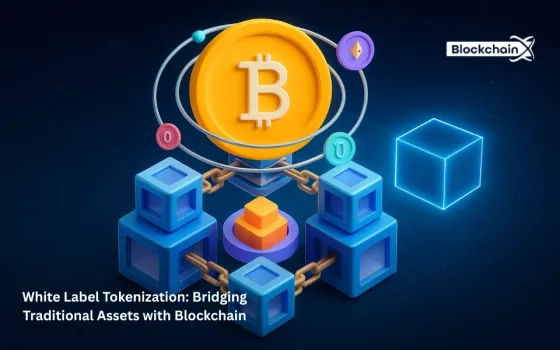The advent of Web3, the decentralized iteration of the internet built on blockchain technology, has ushered in a paradigm shift across various sectors. From finance to gaming, and now social networking, the principles of decentralization, transparency, and user ownership are reshaping how we interact and transact online. Enter SocialFi, a nascent but rapidly evolving concept that promises to revolutionize the way we engage with social media platforms.
SocialFi, a portmanteau of "Social" and "Finance," represents the convergence of social networking and decentralized finance (DeFi). It seeks to integrate the social aspects of online communities with the financial incentives and ownership models made possible by blockchain technology. By combining these two powerful components, SocialFi aims to create a more equitable, transparent, and rewarding social media experience for users.
In this comprehensive article, we'll delve into the intricacies of SocialFi, exploring its core concepts, underlying technologies, and potential implications for the future of social networking.
The Rise of Web3 and Decentralization
To fully grasp the significance of SocialFi, it's crucial to understand the broader context of Web3 and the decentralization movement. Web3 is built on the principles of decentralized architectures, such as blockchain networks, which eliminate the need for centralized intermediaries and allow for direct peer-to-peer interactions.
Decentralization has gained traction across various industries due to its promise of increased transparency, security, and user empowerment. In the realm of finance, decentralized finance (DeFi) has emerged as a disruptive force, enabling individuals to access financial services without the need for traditional intermediaries like banks or brokerages.
By leveraging blockchain technology and smart contracts, DeFi enables trustless, permissionless, and borderless financial transactions, opening up new possibilities for innovation and democratizing access to financial services.
The Limitations of Traditional Social Media
While social media platforms have revolutionized how we connect and share information, they have also faced numerous criticisms and challenges. Centralized control, data privacy concerns, content moderation biases, and the lack of user ownership over content and data have been long-standing issues.
Traditional social media platforms operate under a centralized model, where a single entity (the platform owner) holds absolute control over user data, content moderation policies, and monetization strategies. This centralized structure has led to concerns about data privacy, censorship, and the exploitation of user-generated content for profit.
Moreover, users on these platforms have limited ownership over their content and data, which can be monetized, censored, or even deleted at the discretion of the platform owners.
The Promise of SocialFi
SocialFi aims to address these limitations by integrating the principles of Web3 and decentralized finance into the social networking experience. By leveraging blockchain technology and decentralized architectures, SocialFi promises to deliver a more transparent, equitable, and user-centric social media ecosystem. Here are some key promises of SocialFi:
- User Ownership and Control: SocialFi empowers users by giving them true ownership and control over their data, content, and online identity. Through the use of decentralized architectures and non-fungible tokens (NFTs), users can claim ownership of their social media assets, such as posts, photos, and videos. This ownership can be verifiable and transferable, enabling new monetization models and preventing platforms from exploiting user-generated content without consent.
- Financial Incentives and Tokenization: SocialFi introduces financial incentives and tokenization into the social media landscape. By integrating cryptocurrencies and tokenized ecosystems, SocialFi platforms can reward users for their contributions, engagement, and content creation. This could take the form of earning tokens, participating in revenue-sharing models, or even monetizing their content and social influence directly.
- Decentralized Governance: Unlike traditional social media platforms, where policies and decision-making are centralized, SocialFi embraces decentralized governance models. Community members can participate in the decision-making process, voting on platform rules, content moderation policies, and the distribution of rewards or revenue. This decentralized approach aims to create a more democratic and transparent social media environment.
- Data Privacy and Censorship Resistance: By leveraging decentralized architectures and encryption technologies, SocialFi platforms can offer enhanced data privacy and censorship resistance. User data and content are no longer controlled by a single entity, reducing the risk of centralized data breaches or censorship. Additionally, decentralized storage solutions like the InterPlanetary File System (IPFS) can ensure the immutable and decentralized storage of user-generated content.
- Interoperability and Portability: SocialFi platforms built on open standards and decentralized protocols can enable interoperability and portability of user data and assets across different platforms. This means users can seamlessly move their social media identities, content, and assets between compatible platforms, reducing vendor lock-in and fostering a more open and interconnected social media ecosystem.
Key Components of SocialFi
To understand how SocialFi works, it's essential to examine the key components and technologies that underpin this emerging paradigm.
- Blockchain Technology: Blockchain technology is the foundational layer that enables the decentralized and transparent nature of SocialFi. By leveraging blockchain networks like Ethereum, SocialFi platforms can facilitate trustless transactions, immutable data storage, and decentralized governance mechanisms.
- Decentralized Identities (DIDs): Decentralized identities, or DIDs, are crucial for establishing user ownership and control over social media identities. DIDs are self-sovereign digital identities that exist on the blockchain, allowing users to manage and control their online identities without relying on centralized authorities.
- Non-Fungible Tokens (NFTs): Non-fungible tokens (NFTs) play a pivotal role in representing and transferring ownership of digital assets, such as social media posts, photos, and videos. NFTs are unique, verifiable, and tradable tokens that can be used to tokenize and monetize user-generated content on SocialFi platforms.
- Decentralized Applications (dApps): SocialFi platforms are typically built as decentralized applications (dApps) that run on decentralized networks like Ethereum. These dApps leverage smart contracts to automate processes, enforce rules, and facilitate transactions without the need for intermediaries.
- Decentralized Storage (IPFS, Arweave): To ensure data privacy, censorship resistance, and immutable storage, SocialFi platforms can leverage decentralized storage solutions like the InterPlanetary File System (IPFS) or Arweave. These technologies enable the decentralized and distributed storage of user-generated content, reducing the risk of centralized data breaches or censorship.
- Incentive Mechanisms and Tokenization: SocialFi platforms often incorporate incentive mechanisms and tokenization to reward user participation, content creation, and engagement. This can involve native cryptocurrencies or platform-specific tokens, which users can earn, trade, or use to access premium features or services.
- Decentralized Governance (DAOs): Decentralized Autonomous Organizations (DAOs) are a key component of SocialFi, enabling community-driven governance and decision-making. Through DAO structures, users can participate in voting processes, propose changes, and collectively shape the platform's policies and future development.
Comparison of Traditional Social Media and SocialFi:
| Aspect |
Traditional Social Media |
SocialFi |
| Platform Control |
Centralized |
Decentralized |
| User Data Ownership |
Platform Owns Data |
Users Own Data |
| Content Moderation |
Centralized Policies |
Community Governance |
| Monetization Model |
Ad-based, Platform Revenue |
User Incentives, Token Economy |
| Data Privacy |
Centralized Data Storage |
Decentralized Storage (IPFS, Arweave) |
| Censorship |
Possible |
Censorship-Resistant |
| Interoperability |
Vendor Lock-in |
Cross-Platform Interoperability |
| Identity Management |
Centralized Identities |
Decentralized Identities (DIDs) |
Emerging SocialFi Platforms and Projects:
While SocialFi is still in its early stages, several promising platforms and projects are pioneering this space. Here are a few notable examples:
- Lens Protocol: Lens leverages NFTs to represent user profiles, posts, and other social media assets. Users can earn tokens for their contributions and participate in the platform's governance through a DAO.
- DeSo: DeSo (Decentralized Social) is a blockchain specifically designed for decentralized social media applications. It aims to create a new ecosystem for social networking, content creation, and digital ownership. DeSo enables users to mint NFTs for their content, earn rewards for engagement, and participate in decentralized governance.
- Minds: Minds is a decentralized social network that rewards users with its native Minds token for their contributions and engagement. It incorporates features like content monetization, encryption, and ad-free browsing while promoting user privacy and freedom of expression.
- Sapien: Sapien is a decentralized social media platform built on the Ethereum blockchain. It leverages NFTs to represent user identities and content, enabling users to monetize their creations and earn rewards for engagement. Sapien also incorporates a decentralized governance model through its DAO.
- Audius: Audius is a decentralized music streaming platform that aims to disrupt the traditional music industry by enabling direct artist-to-fan connections and fair compensation. It leverages blockchain technology and cryptocurrencies to facilitate transparent royalty payments and community governance.
Challenges and Considerations
While SocialFi presents exciting opportunities, it is not without challenges and considerations that need to be addressed:
- Adoption and Usability: One of the biggest challenges for SocialFi platforms is achieving mainstream adoption and delivering a user experience that matches or exceeds traditional social media platforms. Onboarding users to Web3 technologies and decentralized architectures can be complex, potentially hindering widespread adoption.
- Scalability and Performance: Decentralized networks and blockchain technologies often face scalability and performance challenges, especially when dealing with high transaction volumes or data-intensive applications like social media. Ensuring smooth user experiences and efficient handling of large amounts of data will be crucial for SocialFi platforms.
- Regulatory Implications: The integration of financial elements, such as cryptocurrencies and tokenized economies, into social media platforms may attract regulatory scrutiny. SocialFi platforms will need to navigate evolving regulations and compliance requirements across different jurisdictions.
- Security and Privacy Concerns: While decentralization and encryption offer enhanced security and privacy, SocialFi platforms must still implement robust security measures to protect user data and assets from potential vulnerabilities or attacks.
- Content Moderation and Governance: Decentralized governance and community-driven content moderation can be challenging to implement effectively. Finding the right balance between free speech, user safety, and maintaining a healthy online environment will be an ongoing challenge for SocialFi platforms.
- Interoperability and Standards: For SocialFi to truly thrive, there needs to be a concerted effort toward establishing industry-wide standards and protocols that enable seamless interoperability between different platforms and ecosystems.
The Future of SocialFi
As Web3 and decentralized technologies continue to evolve, the potential of SocialFi is vast. Here are some potential future developments and implications:
- Emergence of Decentralized Social Graphs: Social graphs, which represent the interconnected relationships between users, could become decentralized and user-owned, enabling seamless portability of social connections across platforms.
- Integration with the Metaverse: SocialFi could extend beyond traditional social media platforms and integrate with virtual worlds and the metaverse, enabling new forms of social interactions, content creation, and digital asset ownership.
- Decentralized Creator Economies: SocialFi could pave the way for more equitable and transparent creator economies, where content creators can directly monetize their work, build loyal fan communities, and participate in revenue-sharing models.
- Social Impact and Philanthropy: The transparency and decentralized nature of SocialFi could enable new models for social impact initiatives, such as decentralized crowdfunding, tokenized philanthropy, and transparent distribution of funds.
- Privacy-Preserving Social Networks: As concerns over data privacy and online surveillance grow, SocialFi platforms could leverage advanced cryptographic techniques and decentralized architectures to create truly private and censorship-resistant social networks.
- Evolution of Digital Identities: Decentralized identities (DIDs) could become the foundation for seamless and secure digital identity management, enabling users to control and selectively share their personal data across various online platforms and services.
Key Takeaways:
SocialFi represents the convergence of social networking and decentralized finance (DeFi), leveraging blockchain technology to create a more transparent, equitable, and user-centric social media ecosystem. It promises user ownership and control over data and content, financial incentives through tokenization, decentralized governance, enhanced data privacy, and censorship resistance.
Key components of SocialFi include blockchain technology, decentralized identities (DIDs), non-fungible tokens (NFTs), decentralized applications (dApps), decentralized storage (IPFS, Arweave), incentive mechanisms, and decentralized governance (DAOs).
Emerging SocialFi platforms like Lens Protocol, DeSo, Minds, Sapien, and Audius are pioneering this space, with unique approaches to content monetization, governance, and user incentives.
Challenges facing SocialFi include adoption and usability, scalability, regulatory implications, security and privacy concerns, effective content moderation, and establishing industry-wide standards.
The future of SocialFi could involve decentralized social graphs, integration with the metaverse, decentralized creator economies, social impact initiatives, privacy-preserving social networks, and the evolution of digital identities.
Conclusion
SocialFi represents a paradigm shift in the way we perceive and engage with social media platforms. By leveraging the principles of Web3 and decentralized finance, it promises to address long-standing issues surrounding user ownership, data privacy, and content monetization.
While still in its early stages, SocialFi holds immense potential to reshape the social media landscape, empowering users, fostering transparency, and creating new economic opportunities. As this emerging field continues to evolve, it will be fascinating to observe how SocialFi platforms navigate the challenges of adoption, scalability, and governance, and how they ultimately shape the future of online social interactions.
Whether you're a social media enthusiast, a content creator, or simply someone intrigued by the potential of Web3 technologies, SocialFi is a space worth keeping an eye on. As decentralization continues to disrupt various industries, the convergence of social networking and finance may very well be the next frontier in democratizing and revolutionizing how we connect, create, and transact in the digital realm.














